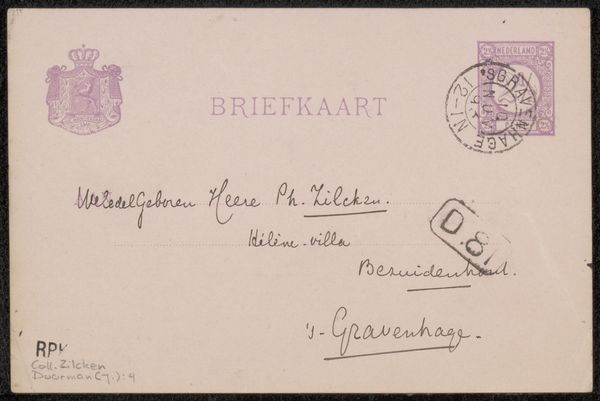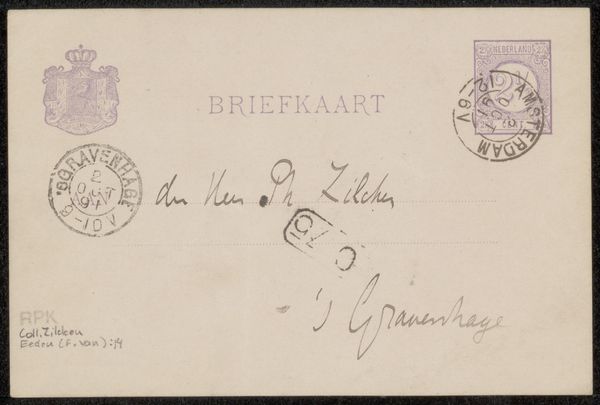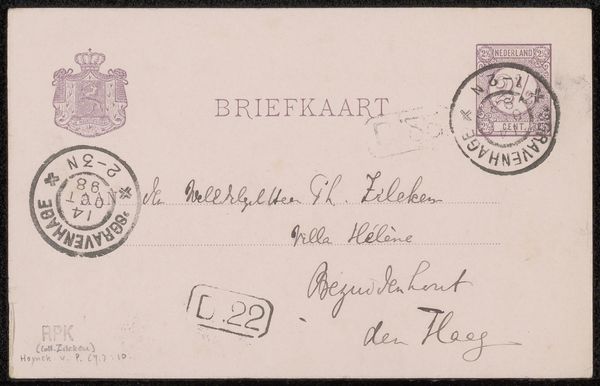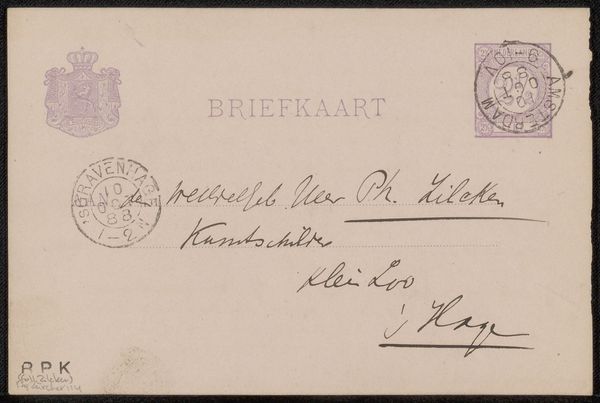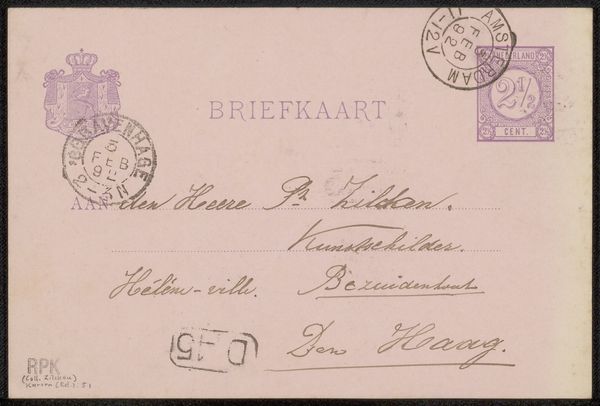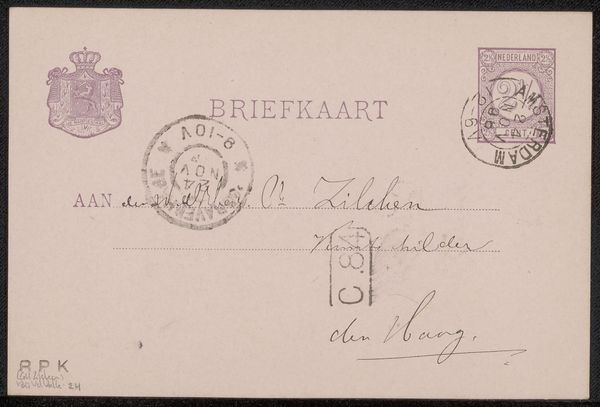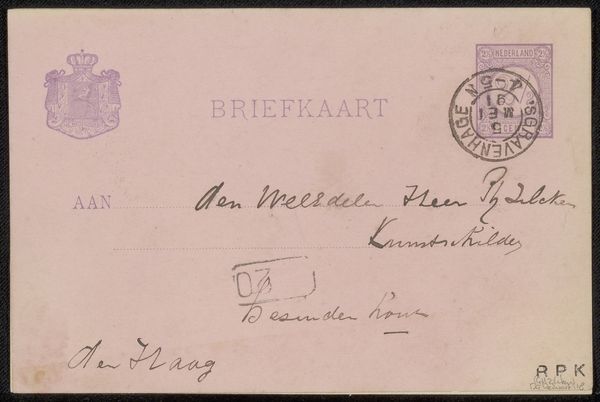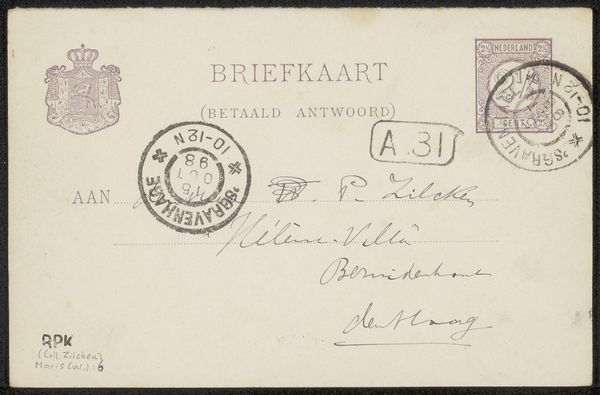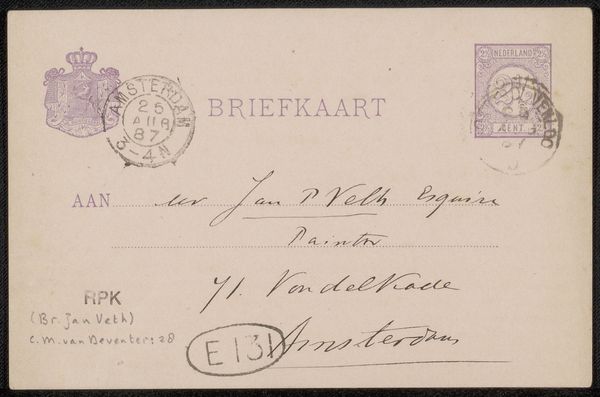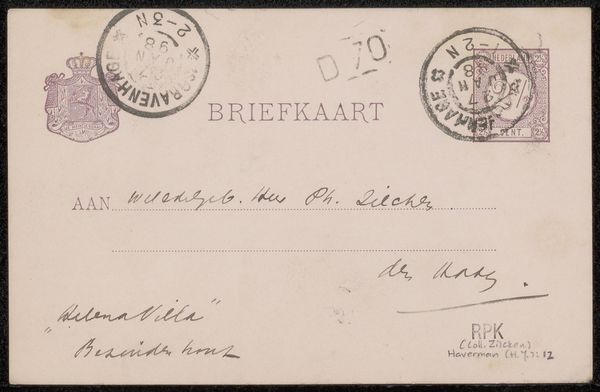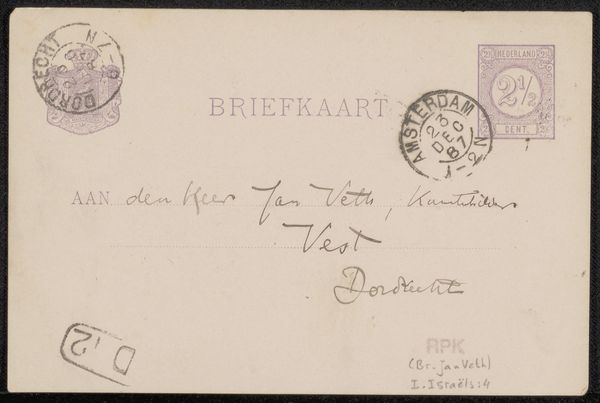
#
hand-lettering
#
pen sketch
#
hand drawn type
#
hand lettering
#
personal sketchbook
#
idea generation sketch
#
ink drawing experimentation
#
pen-ink sketch
#
sketchbook drawing
#
sketchbook art
Copyright: Rijks Museum: Open Domain
Curator: This is an intriguing little piece, dating from the late 19th century, sometime between 1891 and 1899. It’s a postcard, "Briefkaart aan Philip Zilcken," and it's currently held here at the Rijksmuseum. It’s attributed to Frederik van Eeden. Editor: My initial impression is that it looks so fragile! You can almost feel the paper’s texture through the ink. The careful hand-lettering feels like a testament to a slower pace of life, a time before email and instant communication. Curator: Precisely! As a postcard, its materiality tells a story about the democratization of communication. Postcards like this one allowed for wider access to correspondence, circumventing the established class divisions inherent to letter writing, postage rates, and stationery. Editor: So it's not just about communication, but also about accessibility. Look at the postal stamps, they almost become part of the visual design. Did the postal service affect artistic aesthetics? Curator: Absolutely, the placement of stamps, the way the address is written around pre-printed elements – it’s a dialogue between the sender and the institution. Notice the sender clearly designates Zilcken as "Kunstschilder" – artist, showing us a network between artistic people within this socio-political moment. Editor: And the "Kunstschilder" adds a certain…gravitas? Knowing this card went to an artist makes me think about what a commonplace item such as a simple, everyday communication object does. I love thinking of artists just receiving casual mail, yet using the materiality of those letters within their practice. Curator: Yes, considering van Eeden’s position within the Dutch literary world and Zilcken’s as a painter, the postcard embodies a fragment of the late 19th-century cultural milieu, where correspondence acted as both a personal and professional means of exchange. The history and materiality are linked to reveal social circles that created history, both personally and politically. Editor: Exactly. Looking at it now, I find the apparent simplicity really compelling. A brief note, likely dashed off in a moment, yet somehow surviving as a historical marker. A humble postal interaction made monumental. Curator: I’ll concur wholeheartedly. It’s a potent reminder that seemingly insignificant artifacts often provide profound insight into past practices.
Comments
No comments
Be the first to comment and join the conversation on the ultimate creative platform.
